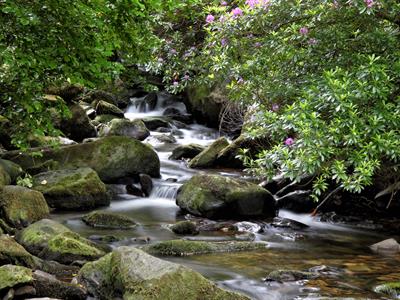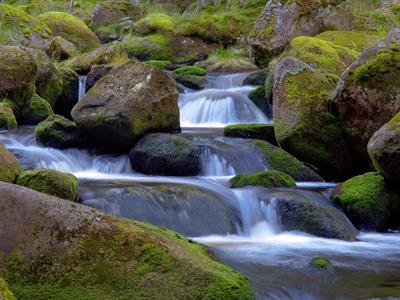
PUMPA - SMART LEARNING
எங்கள் ஆசிரியர்களுடன் 1-ஆன்-1 ஆலோசனை நேரத்தைப் பெறுங்கள். டாப்பர் ஆவதற்கு நாங்கள் பயிற்சி அளிப்போம்
Book Free DemoRiver, river, little river!
Bright you sparkle on your way;
O’er the yellow pebbles dancing,
Through the flowers and foliage glancing,
Like a child at play.
River, river! swelling river!
On you rush through rough and smooth;
Louder, faster, brawling, leaping,
Over rocks, by rose-banks, sweeping
Like impetuous youth.
Bright you sparkle on your way;
O’er the yellow pebbles dancing,
Through the flowers and foliage glancing,
Like a child at play.
River, river! swelling river!
On you rush through rough and smooth;
Louder, faster, brawling, leaping,
Over rocks, by rose-banks, sweeping
Like impetuous youth.
Explanation:
The poet explores a complex theme with the help of a very simply written poem. The poem describes the different stages of a river. Although it may seem that rivers are simple water bodies that ultimately ends in an ocean, its journey can be compared to many real-life incidents and experiences. The first stanza starts with a repetition of the word river, which is also the central point of the poem. The poem seems to straightaway address the river. The poet calls it a little river as it is the beginning of the poem, and it follows the same pattern with the concept of the river as well. The river's initial stage is the upper course when the river starts from its origin. So she calls it 'The Little River'.
The river does not stay stagnated in one place. It runs its course across cities and finally reaches the destination, which is the ocean. As it starts out as young and enthusiastic, with so much positive vibe, it is addressed in the beginning. When there is a purpose and the destination is known, there is a chance that we might experience it as there is something to look forward to. The poet emphasises on this fact by stating that the river is sparkling with joy, as it is on its way to attain its purpose. The sparkle can also mean the movement created by the river that makes it look bright and clear. The river flows through yellow pebbles as if it is dancing its way through. The flow and momentum of the river is similar to a person dancing to a chirpy tune. The river also flows through the flowers, leaves and plants growing on its banks and on its paths. This helps the plants grow as they are watered every day. The river is compared to a child who is playing as it flows in a very happy and fast way, with nothing to stop it. It is a stage without any worries or thoughts where one can be carefree.

River flowing through rocks and foliage
The river ages metaphorically as the stanza progresses. The river, which was like a carefree child, now swells up and becomes a youth. This is when the river reaches its middle course as it slightly starts branching out. There appears a lot of curves due to erosion. In the middle course, features like waterfalls, valleys, potholes etc., become features and therefore, the poet says that it has to experience the soft and rough patches of the soil. Unlike the initial stages, which is more quiet yet fast, the youth stage is loud and brawling as it can be a reference to the sound the river makes when it makes a transition in a waterfall or valley, from an elevated state to a flat surface. It hits both the rocks and the rose beds, meaning it experiences both good and bad on the way to the destination. This phase is very similar to the youth phase, where one acts irrationally without thought or care, but just for the sake of experience.

River gushing into waterfall and rocks
Words with difficult meaning:
| S.No | Words | Meaning |
1 | Sparkle | Shine brightly |
2 | Pebbles | A small stone that is round and smooth |
3 | Foliage | Cluster of leaves or plants |
4 | Swelling | Becoming greater in intensity, or volume |
5 | Brawling | Fight in a noisy way |
6 | Chirpy | Cheerful and lively |
7 | Impetuous | Acting or done quickly and without thought or care |
8 | Erosion | Moving of the upper layer of the soil |
9 | O’er | Short form of over |
10 | Metaphorically | Speaking in terms of indirect comparison |
11 | Irrationally | Without any reason |
12 | Chirpy | Cheerful and lively |
Reference:
State Council of Educational Research and Training (2019). English Standard-9. The River- C.A. Bowles (pp. 141-145). Published by the Tamil Nadu Textbook and Educational Services Corporation.